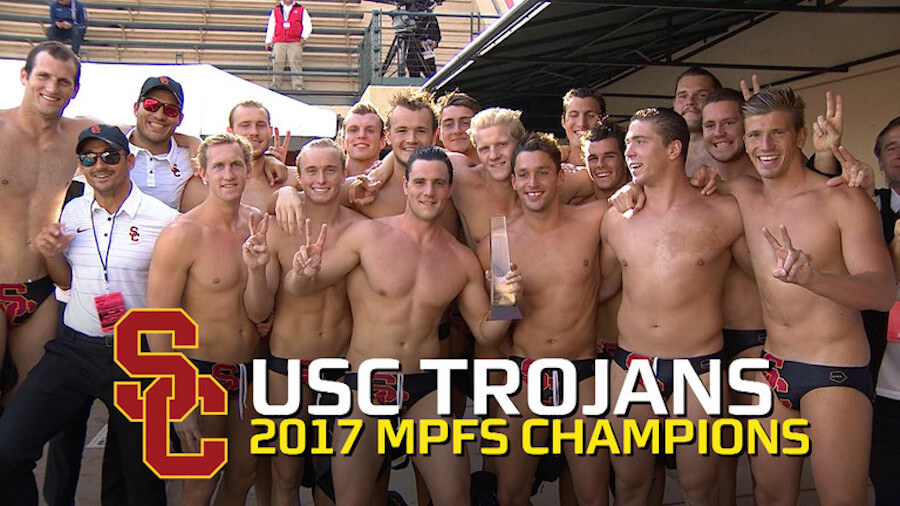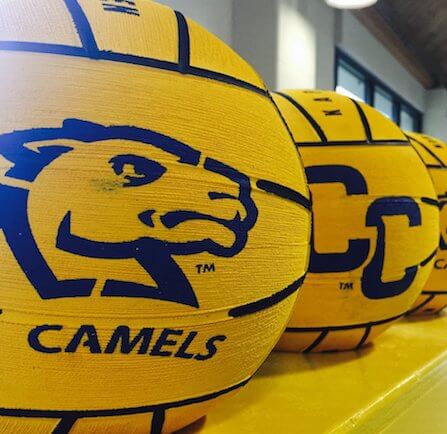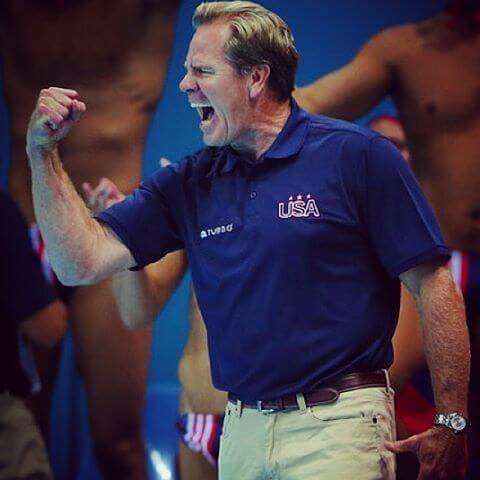What’s Wrong with This Picture: Novice Water Polo Program Joins MPSF?

By Michael Randazzo, Swimming World Contributor
The announcement came in the usual form—a press release embedded in an email. But this was not just any bit of water polo trivia; it concerned the future viability of men’s polo in the Mountain Pacific Sports Federation, home to the country’s most successful men’s and women’s water polo teams.

The news: starting next fall, the men’s water polo program of Austin College, a school of fewer than 1,300 students 50 miles northeast of Dallas, will join the MPSF, a stunning notice akin to hearing, say, that the NCAA’s mighty Southeastern Conference was expanding to include the Bowdoin Polar Bears.
Now, the fact that Sherman, Texas is barely within ICBM-striking distance of either the Mountains or the Pacific is surprising enough, but not without precedent (the conference annexed the polo program of Penn State Behrend three years ago, although Behrend had at least completed at the varsity level in the past); but the Kangaroos of Austin College have played not a single NCAA varsity water polo match. In fact, their program—currently in club status—is exactly one year old.
So what happened? Swimming World wondered too.
Six: the magic number
Like Austin College, little Penn State Behrend of snow-laden Erie, PA, where Joe Tristan has built a respectable program, is nearly a continent away from the polo powers of the MPSF. But in an interview with Swimming World last November, Tristan indicated why two years ago his men’s team joined the MPSF despite being almost 2,500 miles away from UCLA and USC, its closest conference opponent. “Let’s lift a lifeline for them,” he said. “Let’s give them a shot.”

The powerful MSPF was in urgent need of a lifeline. NCAA eligibility rules require that a conference must have six or more varsity members to guarantee the winner an automatic berth in the national tournament. So when Long Beach State, University of the Pacific, Pepperdine, UC Irvine and UC Santa Barbara departed the Mountain Pacific Sports Federation in 2015 to join San Jose State in the Golden Coast Conference, the elite MPSF teams—Cal, Stanford, UCLA and USC, all members of the Pac-12 Conference—were desperate. They faced the real likelihood that one of its members would be denied the opportunity to compete for an NCAA title.
“MPSF men’s water polo has been severely impacted by teams which left the conference a couple of years ago,” Al Beaird, Executive Director of the Federation, wrote in an email. “As a consequence, we were in danger of losing our automatic qualification to the NCAA men’s water polo championship.”
Without the addition of at least two other schools, the MPSF men would lose a perk the conference has enjoyed since its founding 26 years ago to provide non-revenue-producing Olympic sports intercollegiate competition.
And so the Penn State Behrend Lions were recruited; but that left one more spot to be filled in order for the MPSF to keep its “AQ” along with the two at-large bids the conference now receives annually.
A Question of Location and Priorities
Enter Austin College, according to its website, “the oldest institution of higher education in Texas [1849] operating under its original name and charter, as recognized by the State Historical Survey Committee.”

The Kangaroos do field teams in a number of sports, competing in the Division III Southern Collegiate Athletic Conference against similarly-sized private institutions in Texas, Louisiana, and Colorado. Until now they have not fielded a water polo team at all, men’s or women’s, and next fall will be thrown into the deep end, so to speak, against competition above their weight class.
And they will travel. Man, will they travel. UCLA, USC and Los Angeles are 1,400 miles; Cal and Stanford clock in at more than 1,600. But, as it turns out, the Kangaroos (the college actually kept a kangaroo in a special pen at one time, courtesy of the Class of 1923—the name stuck), despite their nominal conference membership, will play only three games against MPSF teams—all at the conference’s end-of-season tournament on the West Coast.
Nevertheless, since Texas contains no other NCAA varsity programs, AC will likely be filling out its schedule against members of the Mid-Atlantic Water Polo Conference West (MAWPC-West), similar smallish Division III schools, whose ranks they might—some would say should—have joined. Nearest would be two schools in Illinois, McKendree University and Monmouth College. After that, a cluster of schools further afield includes Gannon, Mercyhurst, and Salem International. These programs, like Penn St. Behrend, the MPSF school closest to Austin College, are more than 1,200 miles away!

Swimming World spoke in a recent phone call to Matt Anderson, head coach for the men’s and women’s water polo teams at Connecticut College, and a member of the NCAA Men’s Water Polo Committee, about his impressions of the Austin-MPSF union. Given that the flight distance from Dallas to each coast is approximately the same—a trip to the Naval Academy in Annapolis is also 1,400 miles—Anderson pointed out that going East to play less daunting competition was not as inviting a proposition as might it appear.
“You look at geographically, time-wise and financially what makes sense.” he said. “So, without knowing, it might be cheaper for Austin to fly to Los Angeles than it would be for them to fly to Connecticut to play us.”
Because there are no independents in the small world of NCAA varsity polo—consisting of just 48 programs— Anderson said Austin College needs a conference affiliation, competitively compatible or not.
“Whether their goal is to win that conference or not is up to the individual institution,” he said.
Anderson is well-suited to understand the Kangaroos’ situation. Since 2014 he’s coached the Camels, a DIII program that also competes in the Mid-Atlantic Water Polo Conference West; before that, for 12 years, he led the DI women’s water polo program at Michigan, where he took the Wolverines to four NCAA tournaments. He believes that individual institutions need to prioritize their identity as a means of placing a value on athletics programs.
“Part of the Division III model is [that] the kids go there for the academic side,” Anderson explained. “Division I, the athletic side is a difference-maker as to why a kid chooses that school….Division III is so academically orientated that they will get as good as they are able to be based upon the [academic] level of athletes.”
The Kangaroos could have opted for membership in the aforementioned Mid-Atlantic Water Polo Conference West, which primarily contains DIII programs; they will certainly be filling out their 2018 schedule against MAWPC schools. Austin College will play only three games against MPSF teams—all at the conference’s end-of-season tournament on the West Coast.
Legitimate Expansion of the Sport to a Promising Region—or an MPSF Punching Bag?
If there’s one coach who understands how competitive the top MPSF teams are, it’s Pepperdine’s Terry Schroeder. First as a player and then for over three decades as a coach, Schroeder has been battling Cal, Stanford, UCLA and USC in men’s water polo for most of his life. In 1997 a Schroeder-coached Pepperdine squad was the last non-Pac-12 team to win a national championship, and he was one of the ringleaders of the move by five non-Pac-12 teams three years ago to jump ship to the Golden Coast Conference.

Terry Schroeder. Photo Courtesy: USA Water Polo
Schroeder, who won Olympic silver medals in 1984 and 1988 as a player for the U.S. Senior Men’s National Team and also coached Team USA to a silver medal in the 2008 Beijing Games, was skeptical of the stated reasons for the Austin-MPSF union.
“[The MPSF is] doing what they have to do to maintain their automatic qualifier,” he said of the recent announcement. “It’s hard to understand how it makes the big picture better. Maybe adding one more team with Austin College, continuing to grow the sport that way.”
MPSF Executive Director Beaird emphasized that growth is one reason for expanding his conference to Texas; the other is ensuring the best teams qualify for the nation’s top tournament.
“By bringing Austin College into the MPSF we will be able to maintain our AQ while helping to grow the sport in a new region of the country where until now collegiate water polo has not existed,” Beaird said. “It would not present the NCAA championship in the best light if the perennial top conference in the country does not have an opportunity for automatic qualification.”
Perhaps so. But, as Schroeder points out, in order for the Kangaroos and Lions to improve their level of play enough to be anything but a noncompetitive oddity within the MPSF, both programs will need to play a full schedule of highly competitive matches—as well as elevate their practice regimen.
“Mountain Pacific teams are the four best teams in the country right now,” he said. “For one of those schools to compete at that level, it’s a huge jump.”
Whatever the stated reasons, there’s no question that the optics aren’t good of this union between the country’s best teams and what promises to be, at least in 2018, one of its worst.
“Penn State and Austin College come out and they play a couple of games against [top MPSF teams] and get throttled.” Schroeder said. “it’s no competition at all.
“Whose motivation is it right now?” he added. “Is it Austin College’s? Or is it Mountain Pacific taking care of themselves?”
With Chip Brenner




This is a total joke for the MPSF teams. As a former member of MPSF team I cannot understand the decision to let a non competitive team into the conference. Getting to six teams I understand. But to put in a team that is not anywhere near the caliber of waterpolo as the other teams in the conference is not a smart choice. I am all for growing the sport in Texas. But how is that team going to be motivated when they are slaughtered every conference game they play? He top 4 could play only using their off hands and still beat the kangaroos with ease.
Dear Matt:
Thanks for your comments!
So, of course, I did look you up. Great that you got to play under Jack Kocur at Pepperdine (and – no less – with Terry Schroeder around).
Okay, it’s E-A-S-Y to dump on the MPSF for this (and I suppose I’m supplying the shovel), but I would say that my approach was to dig a bit under the optics (even though I positioned Coach Schroeder’s quotes for maximum impact). As I processed Coach Anderson’s comments, I felt it was clear that Austin had a difficult choice (though I also believed it’s clear from a competition standpoint the Kangaroos would be better served by staying closer to home). The MPSF also was in a bind; who else would make their conference whole again. So, can you really blame them for taking the Penn State / Austin lifeline when the ONLY four teams that will ever matter in their conference benefit?
For the sport, is it better to have six teams and two MPSF teams (who will always be the top of the polls) OR eight teams and three MPSF teams? (I think I know what you might think…).
Perhaps the REAL issue is that no other team in the Pac-12 thinks enough of MWP to start a program….
Your correspondent
Great article on the state of college polo. Thanks for the insight.
Dear Water Polo Mom:
Thank you for your comments. This is an interesting topic [to me], so I’m grateful that Coach Anderson, Executive Director Beaird and Coach Schroeder were willing to share their insights.
There’s sure to be more to this story in the coming months…
Your correspondent